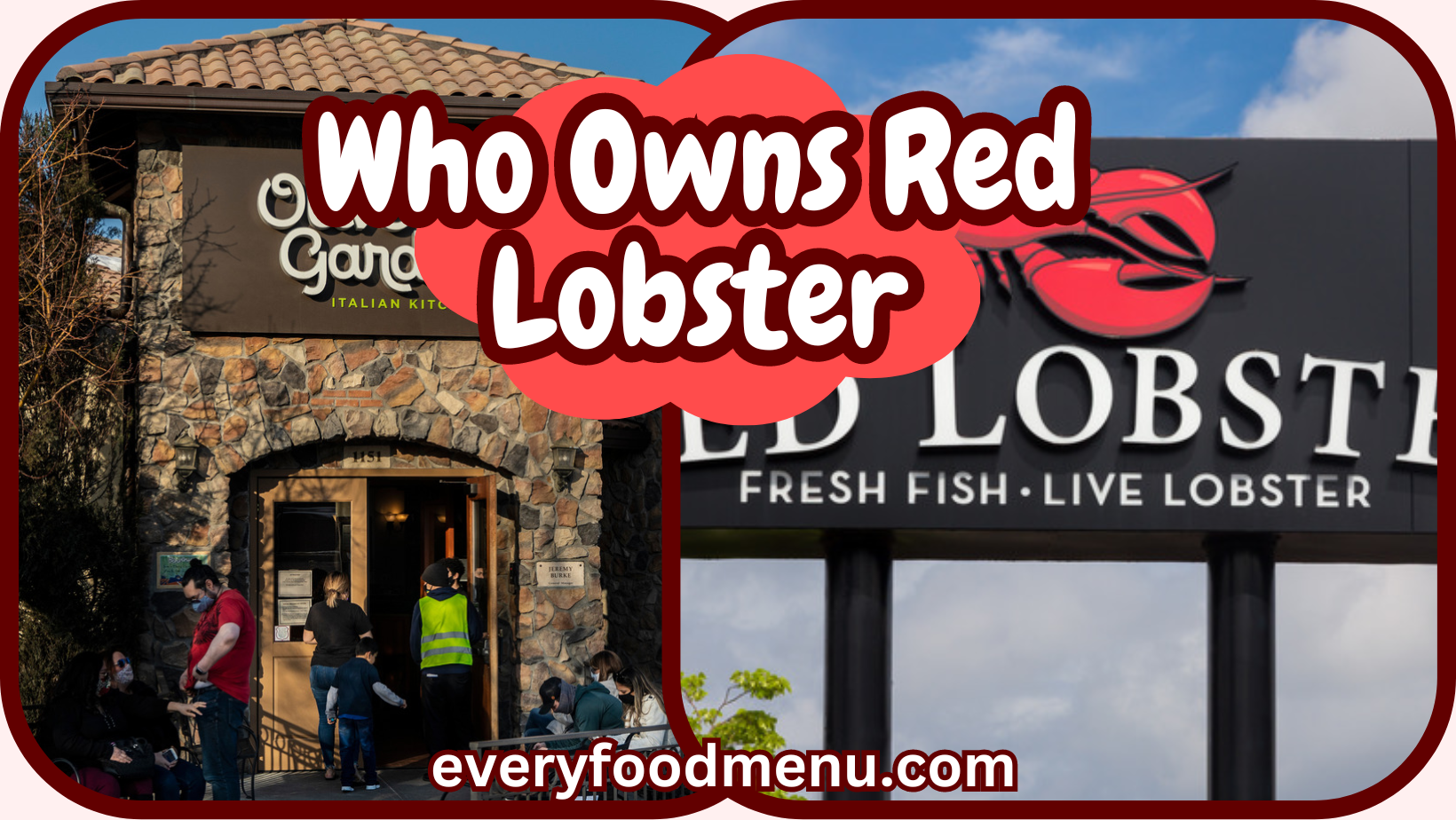Red Lobster – The Fantastic Story
It seems like you’re going through a tough time, but it’s great that you find comfort in talking about things that bring you joy, like Red Lobster’s Cheddar Bay Biscuits. These biscuits have become an iconic part of the Red Lobster experience, even overshadowing the lobster itself for many people. It’s incredible that they serve over 1 million of these delicious treats daily! And it’s fascinating to learn that they weren’t even introduced until 1988, 20 years after the company’s inception. Oh, I have a lot of surprising facts to share.
There’s one man more associated with Red Lobster than anyone else, someone you’ve probably never heard of, which is a shame, so let me tell you about him. His name is Bill Darden. In 1938, he opened a small diner in his hometown in Georgia. Right away,Three Reason:
1. Bill Darden opened a small diner in his Georgia hometown in 1938.
2. The timing wasn’t ideal, being toward the end of the Great Depression.
3. At just 19 years old, Darden embarked on this venture.
4. Remarkably, he refused to segregate customers based on race, a bold move in 1930s Georgia.

Bill Darden, a pioneer in the restaurant industry, embarked on his journey by opening a small diner in his Georgia hometown in 1938, defying the odds of the Great Depression. Despite challenges such as his age of 19 and refusal to segregate customers based on race, Darden’s determination drove him forward. Expanding his ventures, he later acquired Howard Johnson franchises and, in 1963, purchased a seafood restaurant in Orlando known as Gary’s Duck. The success of this acquisition, coupled with his entrepreneurial spirit, led him to establish his seafood restaurant, Red Lobster, marking the beginning of a culinary legacy.
With a knack for naming his establishments after animals, Darden transitioned from the Green Frog diner to the renowned Red Lobster seafood chain. Though there’s no concrete confirmation, the progression from Green Frog to Red Lobster hints at Darden’s creative vision and willingness to take risks. Red Lobster, conceived as a family-oriented seafood destination, challenged the prevailing norms of the time, offering a unique dining experience that catered to a broader audience. Darden’s bold venture reshaped the seafood dining landscape and laid the foundation for Red Lobster’s enduring success in the years to come.
MAY YOU ALSO LIKE:
- Red Lobster Sausage Balls Recipe
- Red Lobster Happy Hour
- Red Lobster Endless Shrimp Menu
- Red Lobster Dessert Menu
First Red Lobster
Bill Darden’s penchant for challenges was evident when he established the first Red Lobster restaurant in Lakeland, Florida, far removed from coastal areas and major cities. Despite conventional wisdom suggesting otherwise, Darden saw it as an opportunity to prove that success could be achieved even in seemingly unfavorable settings. By 1970, with multiple Red Lobster locations thriving in the area, Darden’s unconventional approach had begun to pay off. However, Darden opted for a different strategy to expand the brand further than traditional franchising. Instead, he sold Red Lobster to General Mills, a seemingly unlikely buyer known for its cereal brands like Cheerios. Yet, General Mills saw the potential in Darden’s concept of a family-friendly seafood restaurant and recognized the synergies between their fish sales operations and Red Lobster’s vision. This strategic acquisition allowed Red Lobster to grow under Darden’s continued guidance, as General Mills kept him actively involved in the business through various executive roles.
Expansion:
Under General Mills’ ownership, Red Lobster underwent rapid expansion, growing from just three locations to 291 within a decade, with sales soaring to $528 million. Each new location contributed to the overall revenue and witnessed an impressive increase in sales per outlet over time, a testament to the brand’s growing popularity. Geographically, the expansion was remarkable, with Red Lobster reaching more than half the country by the 1980s, marking a significant shift from its initial presence solely in Central Florida. Concurrently, General Mills diversified its restaurant portfolio, acquiring and nurturing other chains like Olive Garden, which quickly burgeoned into a national phenomenon. However, in 1995, General Mills divested its restaurant holdings, including Red Lobster and Olive Garden, into a separate entity, Darden Restaurants, which boasted over 700 Red Lobster outlets and hundreds of Olive Garden locations, generating billions in sales.
Post-spin-off, Red Lobster faced challenges as market dynamics shifted. Despite efforts to diversify its menu and increase prices, the brand needed help to maintain its dominance amidst mounting competition and changing consumer preferences. By 2013, Red Lobster’s performance faltered, with declining sales and foot traffic contrasting sharply with the continued success of Olive Garden and other Darden-owned chains. The decline underscored the challenges of adapting to evolving market demands while preserving the brand’s core identity. Red Lobster’s woes highlighted the importance of innovation and agility in the competitive restaurant industry, where consumer tastes and preferences are ever-changing, ultimately prompting a reevaluation of the brand’s strategy and direction.
Separating:
In 2013, Darden Restaurants, named after its founder Bill Darden, decided to distance itself from Red Lobster, announcing plans for separation. By May 2014, Red Lobster was sold to Golden Gate Capital, a private equity firm, for $2.1 billion. This move benefited Darden as it provided much-needed funds to alleviate debt and focus on revitalizing other chains under its umbrella, particularly Olive Garden. Since becoming a private company, Red Lobster has shown positive signs, with consistent growth in comparable restaurant sales each quarter post-separation. Under new leadership, the company has emphasized its seafood offerings, invested in restaurant remodeling and expansion, and introduced new menu items and drinks to attract customers. Notably, a surge in sales was observed after Red Lobster was mentioned in a song by Beyonce, indicating its enduring popularity among consumers. Despite its ups and downs, Red Lobster’s journey reflects resilience and adaptability in the competitive restaurant industry.
Reflecting on Red Lobster’s journey, it’s fascinating to note some remarkable facts that underscore its enduring legacy. From its humble beginnings in 1938 by a 19-year-old entrepreneur to its transformation into a national seafood chain, Red Lobster has defied the odds and evolved with the times. Notably, its introduction of Cheddar Bay Biscuits in 1988 became an instant hit, symbolizing its unique appeal. Over the years, Red Lobster’s geographic expansion and innovative menu offerings have contributed to its enduring popularity, cementing its status as a beloved dining destination. Despite challenges like ownership changes and shifting consumer preferences, Red Lobster has remained a steadfast fixture in the restaurant landscape, showcasing resilience and adaptability in an ever-changing industry.
Crazy Facts About Red Lobster
Here are some crazy facts about Red Lobster that are sure to stick with you:
1. Red Lobster was founded by a man who previously named a restaurant “Green Frog,” sparking curiosity about what other animal-themed eateries he might have created.
2. For 25 years, General Mills owned Red Lobster, the same company behind the iconic breakfast cereal Cheerios. Interestingly, General Mills also birthed another popular chain, Olive Garden.
3. Darden Restaurants, named after the founder of Red Lobster, no longer owns the seafood chain, signifying a significant shift in ownership over the years.
4. Did you know? Red Lobster is credited with inventing popcorn shrimp, a beloved seafood dish many enjoy.
FREQUENTLY ASK QUESTION
Q: Who is Red Lobster owned by?
Golden Gate Capital, a private equity firm, owns Red Lobster.
Q: Who owns Olive Garden and Red Lobster?
Darden Restaurants previously owned both Olive Garden and Red Lobster. However, Red Lobster was sold to Golden Gate Capital in 2014, while Olive Garden remains under the ownership of Darden Restaurants.
